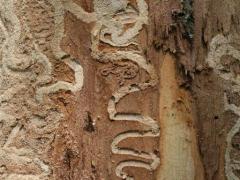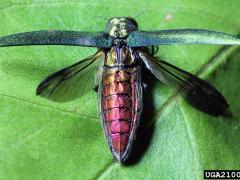Webinar: Silvicultural Considerations for Vermont’s Ash within the Context of EAB
- Webinar

Officials at the Maine Department of Agriculture, Conservation and Forestry (DACF) report that emerald ash borer (EAB) has been found in Maine. Despite an aggressive search for at least a decade, the destructive forest insect from Asia had not been detected in Maine previously. It has killed hundreds of millions of ash trees in thirty-four states throughout the country. The estimated commercial (unprocessed) value of Maine ash trees is approximately $320 million.

After years trying to stop the spread across state lines of an invasive beetle that destroys trees, the federal government looks about ready to give up.
The Department of Agriculture will soon propose abandoning an emerald ash borer quarantine that restricts the movement of firewood and items from ash trees, putting new emphasis on biological controls and other approaches that don't require federal regulations and, the agency said, may be more effective.

As part of the ongoing response to the recent discovery of the Emerald Ash Borer (EAB) within the state, Vermont has joined the United States Department of Agriculture (USDA)’s 31-state quarantine boundary. The quarantine will help reduce the movement of infested ash wood to un-infested regions outside of Vermont’s borders. Ash wood may not be moved from Vermont to Maine, Rhode Island, or 5 counties in New Hampshire because the pest has not been identified in these states and counties. Vermont will be directing available resources to protect state forest health by providing Vermonters with low-risk options for use and disposal of wood that is already infested.
Learn how to identify emerald ash borer, signs and symptoms, and what you can do to protect your ash trees. Check out this homeowner's guide to emerald ash borer.
Check out this fact sheet with information for forest landowners on emerald ash borer.
What’s that?! is a series of 10 stations with scenarios and photos all about the emerald ash borer, native look-a-likes, and more. Each scenario allows students to put their knowledge to the test and see what they would do in that situation. Each station has an answer included.
Check out the 10 stations of What's that?!